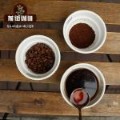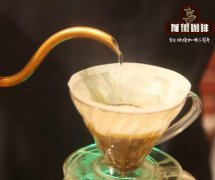Introduction of Colombian Coffee Tangbo Manor and description of its Flavor characteristics
Colombian coffee exploration: washed with mellow creamy texture and citrus sour taste, the entrance is clean, with the sweetness of brown sugar. It shows aromas of apple, citrus, caramel, Earl Grey Tea and a hint of plums, with a sour taste of fresh lemon and a long finish.
Cauca province is one of the well-known boutique coffee producing areas in Colombia, bordering Nalinglong in the west and Vera province in the east.
The 29 administrative districts where coffee is grown range from 1758 meters to 2100 Michael above sea level.
Like the boutique coffee producing areas in southern Colombia, the climate, rainy season, volcanic soil and other factors have a high degree of homogeneity. A fixed rainfall cycle (the dry season from August to September is followed by a rich rainy season, Rain Water) provides favorable fruiting factors for coffee trees.
High-intensity sunshine and low rainfall coincide with the flowering season (July-August), when it also leaves the equatorial windless zone, providing favorable flowering conditions for coffee trees. These factors also contributed to the concentrated harvest in the first quarter of the next year.
Compared with other coffee-growing areas in Colombia, the most climatic variability is the daytime temperature here:
The daily average temperature is as low as 11 degrees, and the average temperature during the day is 18 degrees (4 degrees at night).
This sharp temperature difference between day and night is a boost to the growth of Coca Coffee. The low night average temperature caused by high altitude slows down the ripening of coffee beans, improves the acidity and gives special sweetness.
Sotara is a small town in the middle of Cauca, while the Sotara volcano belongs to the Andes, providing nutritious soil for coffee beans to grow.
Coffee cultivation in this area covers an area of about 911 hectares and consists of mountainous areas and three well-known rivers: Caueta, Cauca and Magdalena.
Aroma: caramel, toffee, caramel, almonds, citrus, orange, grapefruit (round and sweet)
The three Codiera mountains in Colombia run north and south, extending into the Andes. Local coffee farmers grow coffee along the highlands of these mountains, with diverse climatic production conditions; and because of changes in topography and altitude, a large part of Colombia's coffee industry is produced by small farmers.
However, unlike the coffee-producing countries in Central America, which are mostly classified by the altitude of their growth, Colombian coffee is distinguished by the size of the bean-shaped mesh, of which the Supremo grade above 17 mesh is the largest, and the next grade is the 16-mesh EXCELSO EXTRA.
The next few years will be Colombia's brilliant trend will become more and more obvious in Colombia's Cauca producing area, the Coca Zhuo Cup (Best of Cauca).
All the participants in this competition are small farmer batches, that is, each batch is a micro batch.
All the bid money goes directly into the pockets of small farmers.

Important Notice :
前街咖啡 FrontStreet Coffee has moved to new addredd:
FrontStreet Coffee Address: 315,Donghua East Road,GuangZhou
Tel:020 38364473
- Prev

Cold coffee also has its unique benefits. It's low acidity. How to do the Universal Base of Cold Coffee
Cold coffee also has its own benefits. Low acidity coffee is generally brewed in hot water, so its acidity is higher, and more polysaccharides and milk need to be added to cover the sour taste. On the contrary, cold-soaked coffee is soaked in ice water and tastes better without any heating. Lower acidity not only makes it taste better, but also is good for health. When drinking cold coffee, sugar and milk are added.
- Next

Description of flavor characteristics of coffee treated with El Salvador black honey
Country: El Salvador production area: Chara á n Fruit Grade: SHG treatment: black honey treatment altitude: 1400-1500m varieties: Pacas Pacas 2015 COE 12th 2014 COE 4th 2013 COE 4th active volcanic activity brings mineral-rich volcanic ash to the country, the soil mainly composed of volcanic ash has more minerals and less organic matter.
Related
- Detailed explanation of Jadeite planting Land in Panamanian Jadeite Manor introduction to the grading system of Jadeite competitive bidding, Red bid, Green bid and Rose Summer
- Story of Coffee planting in Brenka region of Costa Rica Stonehenge Manor anaerobic heavy honey treatment of flavor mouth
- What's on the barrel of Blue Mountain Coffee beans?
- Can American coffee also pull flowers? How to use hot American style to pull out a good-looking pattern?
- Can you make a cold extract with coffee beans? What is the right proportion for cold-extracted coffee formula?
- Indonesian PWN Gold Mandrine Coffee Origin Features Flavor How to Chong? Mandolin coffee is American.
- A brief introduction to the flavor characteristics of Brazilian yellow bourbon coffee beans
- What is the effect of different water quality on the flavor of cold-extracted coffee? What kind of water is best for brewing coffee?
- Why do you think of Rose Summer whenever you mention Panamanian coffee?
- Introduction to the characteristics of authentic blue mountain coffee bean producing areas? What is the CIB Coffee Authority in Jamaica?

